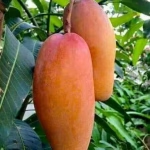For thousands of years, horses have been humanity’s loyal companions—pulling carts, tilling soil, charging into battle, and performing in arenas. As horses spread across continents and adapted to different climates and human needs, a stunning variety of breeds emerged. Each breed has its own unique traits, history, and cultural significance. Some were bred for speed, others for strength, and many for versatility and companionship.
Thank you for reading this post, don't forget to subscribe!This article explores some of the most fascinating horse breeds from around the world, highlighting their origins, physical characteristics, and the roles they’ve played in human history.
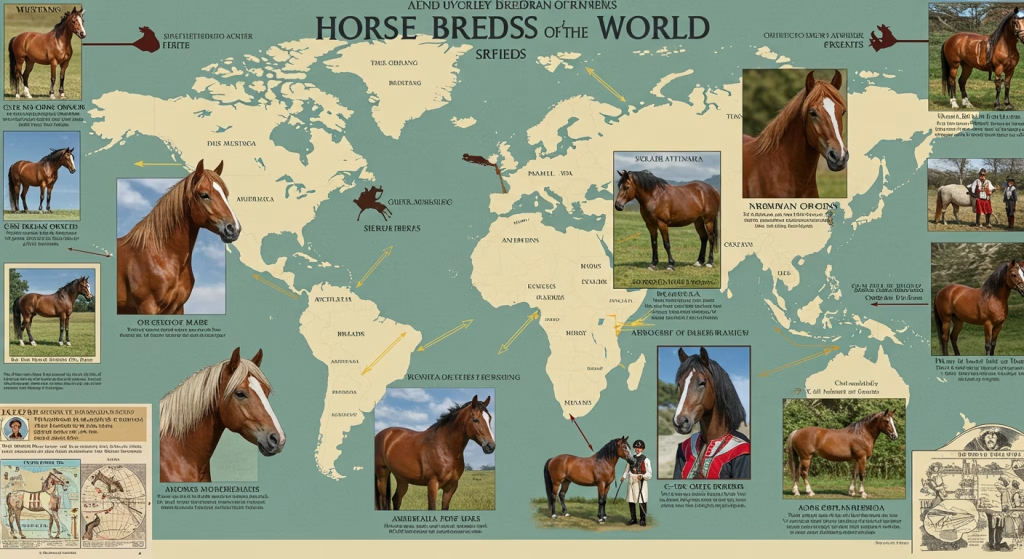
1. Arabian Horse: The Desert’s Gift
Origin: Middle East (Arabian Peninsula)
Traits:
- Dished face and arched neck
- High tail carriage
- Exceptional stamina and endurance
- Friendly, intelligent nature
The Arabian horse is one of the oldest and most influential breeds in the world, with bloodlines dating back over 4,500 years. Bred by the Bedouins in the harsh deserts of the Arabian Peninsula, these horses were prized for their endurance, loyalty, and spirit.
Arabians are known for their refined beauty and are often used to improve other breeds due to their strong genetics. Despite their relatively small size, they are incredibly strong and fast, making them ideal for long-distance riding and endurance competitions.
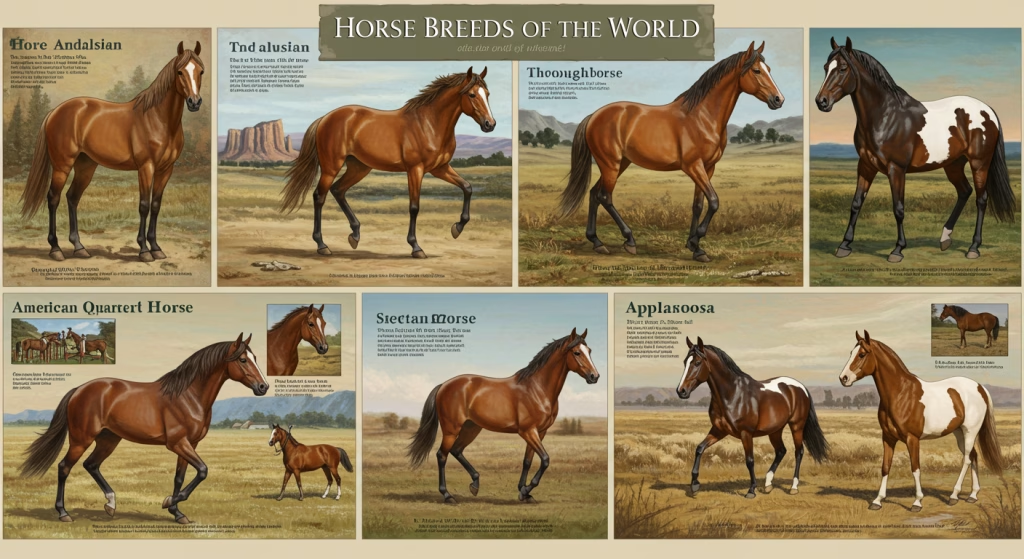
2. Thoroughbred: The Speed Machine
Origin: England
Traits:
- Tall and athletic build
- Long legs, deep chest
- Incredible speed and agility
- High-strung temperament
Developed in the 17th and 18th centuries by crossing Arabian stallions with native English mares, the Thoroughbred was built for speed. It dominates the world of horse racing and is synonymous with events like the Kentucky Derby and Royal Ascot.
Beyond racing, Thoroughbreds are often retrained for jumping, dressage, and eventing once their racing careers end. While they require careful handling due to their sensitive nature, they offer unmatched athleticism.

3. Andalusian: The Noble War Horse
Origin: Spain (Andalusia)
Traits:
- Strong, compact build
- Thick, flowing manes and tails
- Natural collection and graceful movement
- Proud, willing temperament
The Andalusian, or Pure Spanish Horse (Pura Raza Española), is renowned for its beauty, elegance, and intelligence. Used by European nobility for centuries, it was the favored horse of kings, generals, and classical dressage riders.
Andalusians excel in dressage, parades, and historic re-enactments, and they’re beloved for their majestic appearance and gentle disposition.
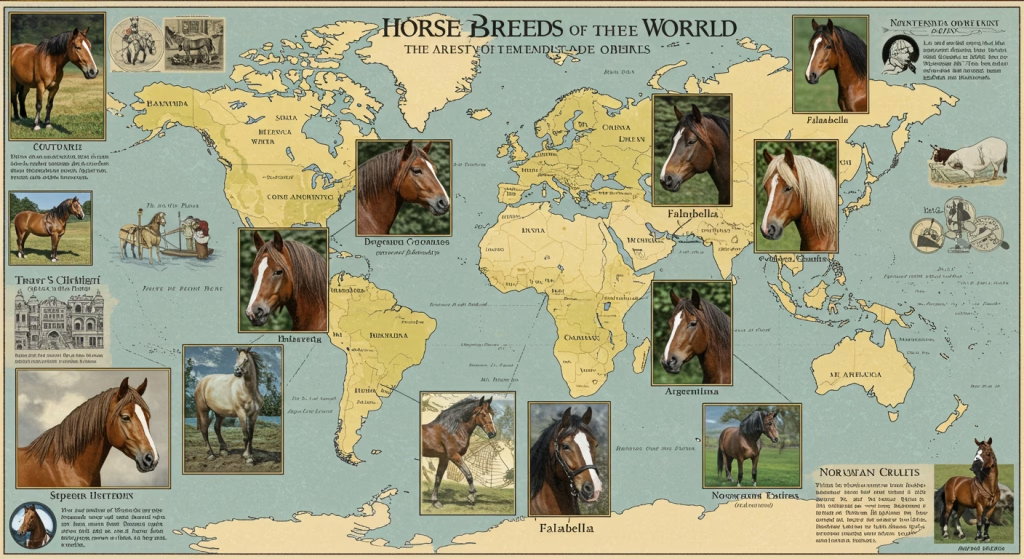
4. Friesian: The Black Pearl of the Horse World
Origin: The Netherlands (Friesland)
Traits:
- Solid black coat (most commonly)
- Feathered legs and long, flowing mane
- Upright, high-stepping movement
- Calm and people-oriented
The Friesian horse is one of the most visually striking breeds. Once used as war horses in medieval Europe, Friesians were strong enough to carry armored knights into battle.
Today, they are popular in dressage, driving, and film. Their dramatic appearance and sweet temperament make them stars in both performance and companionship roles.
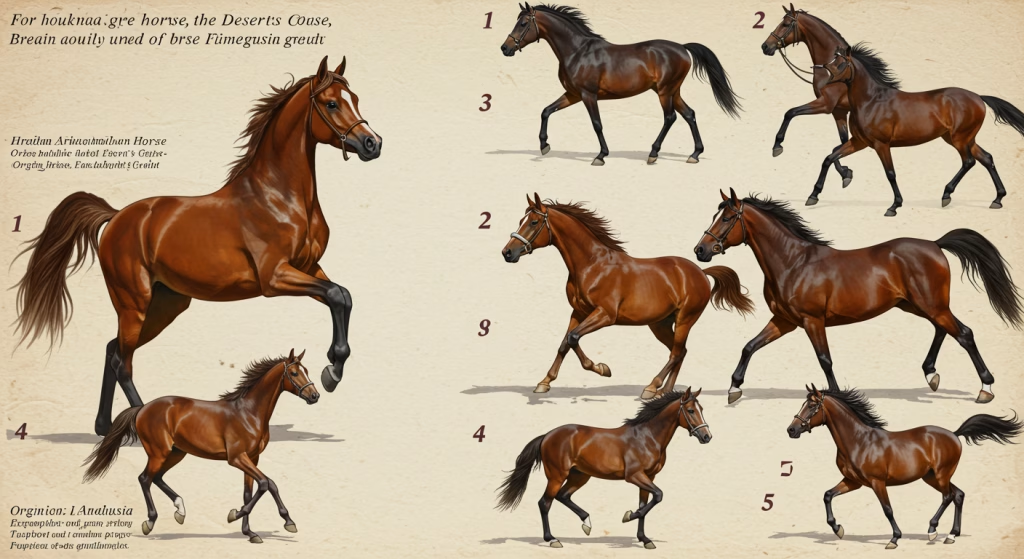
5. Mustang: The Spirit of the American West
Origin: North America (feral descendants of Spanish horses)
Traits:
- Hardy and resilient
- Medium build with varied coloring
- Independent and intelligent
- Adapted to wild environments
The Mustang is a symbol of freedom and the untamed spirit of the American West. Descended from horses brought by Spanish conquistadors, Mustangs adapted to life in the wild over centuries.
Although considered “feral” rather than a true breed, Mustangs are recognized for their hardiness and genetic diversity. Some are adopted through the Bureau of Land Management (BLM) and trained for trail riding, ranch work, or companionship.
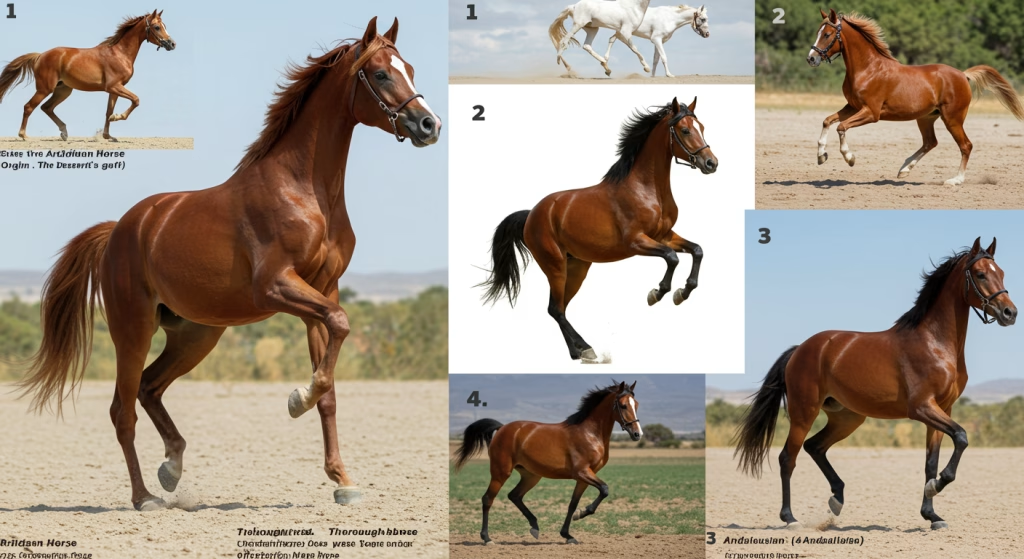
6. Clydesdale: The Gentle Giant
Origin: Scotland
Traits:
- Large size (often over 18 hands)
- Feathered lower legs
- Broad chest and muscular build
- Calm, gentle personality
The Clydesdale is one of the most iconic draft horse breeds. Originally bred for heavy farm work and hauling in Scotland, they are now best known for their role as the Budweiser horses, pulling wagons in parades and commercials.
Despite their size, Clydesdales are known for their sweet nature and are often used in therapy programs and exhibitions.
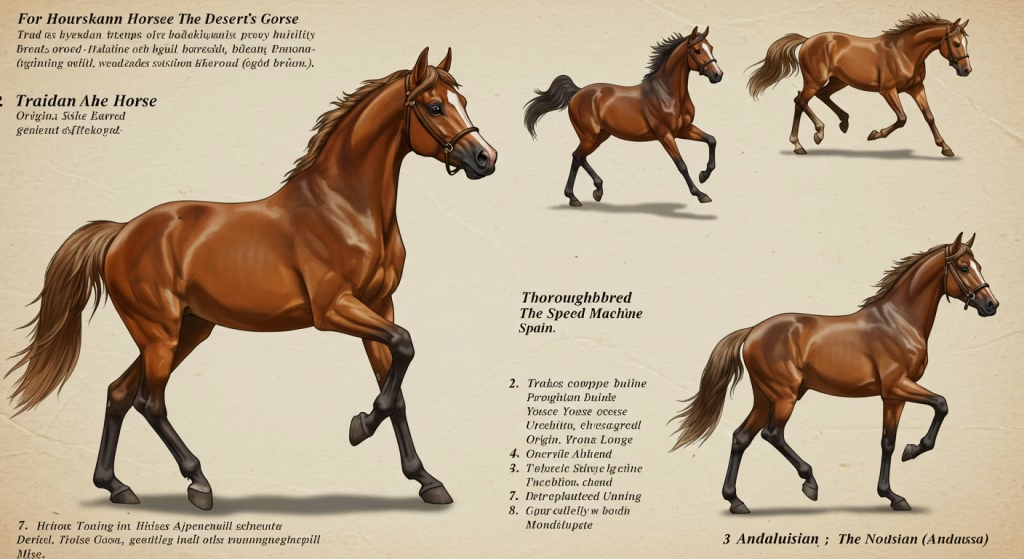
7. Akhal-Teke: The Golden Horse
Origin: Turkmenistan
Traits:
- Metallic sheen to coat
- Slim and athletic build
- Tough and heat-resistant
- Loyal, sensitive temperament
The Akhal-Teke is one of the oldest horse breeds in existence, revered for its beauty and endurance. Often called the “golden horse” due to its shimmering coat, this breed thrives in extreme desert climates.
Historically used by nomadic tribes and later for cavalry, Akhal-Tekes are now rare and highly prized. They perform well in endurance, dressage, and show jumping.
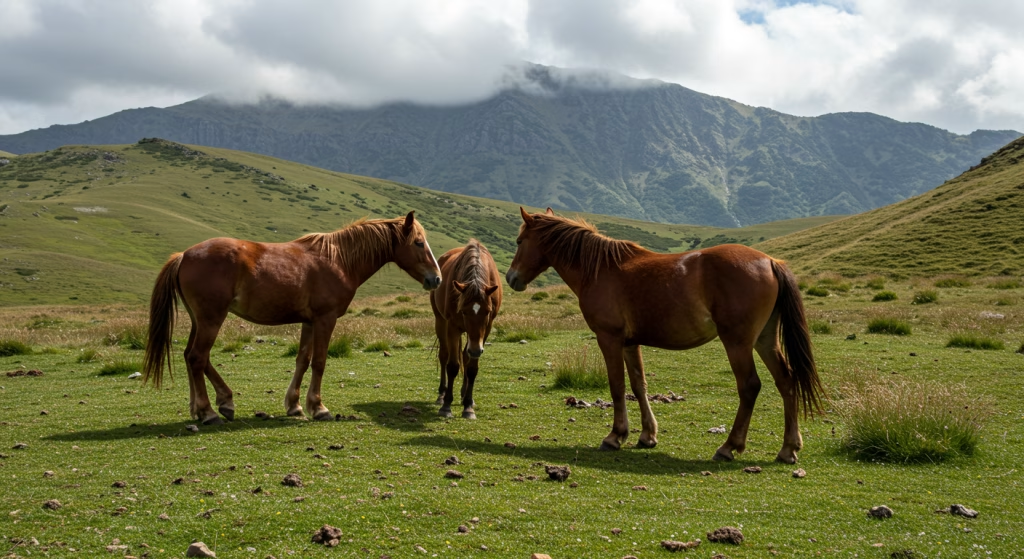
8. Shire Horse: England’s Towering Draft
Origin: England
Traits:
- One of the tallest breeds
- Feathered legs
- Strong and docile
- Traditionally used for pulling heavy loads
The Shire horse was once essential for hauling goods and plowing fields across England. With some individuals reaching over 19 hands tall, the Shire is considered one of the tallest horse breeds.
Today, they are popular in parades and exhibitions, often paired with traditional carriages. Their patient and calm demeanor also makes them excellent family horses.

9. Icelandic Horse: Small but Mighty
Origin: Iceland
Traits:
- Small and sturdy
- Thick mane and coat
- Unique gaits (tölt and flying pace)
- Hardy, easy keepers
Don’t be fooled by their pony-like appearance—the Icelandic Horse is powerful and tough. Isolated on the island of Iceland for over 1,000 years, these horses were bred to withstand cold winters, rough terrain, and minimal care.
Unique among breeds, Icelandic horses have five gaits instead of the usual three (walk, trot, canter). Their special tölt is smooth and comfortable, even at high speeds. They’re beloved for trail riding, endurance, and their friendly personalities.

10. American Quarter Horse: The All-Around Star
Origin: United States
Traits:
- Strong hindquarters and muscular build
- Quick acceleration (especially over short distances)
- Calm, trainable nature
- Versatile in work and sport
The American Quarter Horse is the most popular breed in the U.S., known for its versatility and ease of training. Originally bred for sprint races of a quarter mile—hence the name—they now excel in Western disciplines such as reining, cutting, and rodeo events.
Quarter Horses are also popular among recreational riders, ranchers, and even mounted police due to their reliability and athleticism.
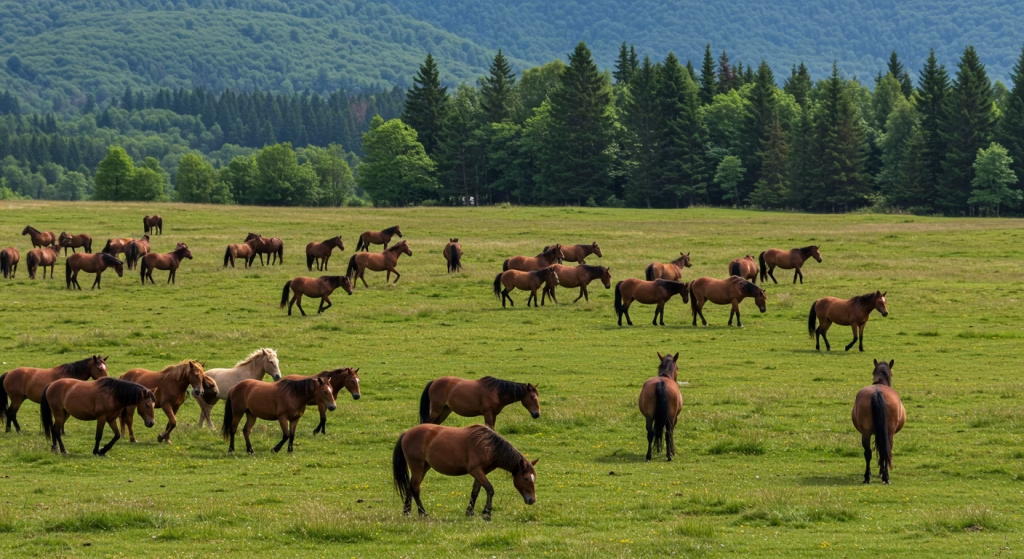
11. Marwari: India’s Sacred Horse
Origin: India (Marwar region, Rajasthan)
Traits:
- Inward-turning ear tips
- Hardy and heat-tolerant
- Deeply loyal
- Historically used in warfare and ceremonies
The Marwari horse is instantly recognizable by its unique ears, which curve inward to nearly touch. Once the steed of Indian royalty and warriors, the Marwari is still regarded with cultural and spiritual reverence.
Though rare outside India, the breed is regaining popularity through preservation efforts and is admired for its bravery and grace.
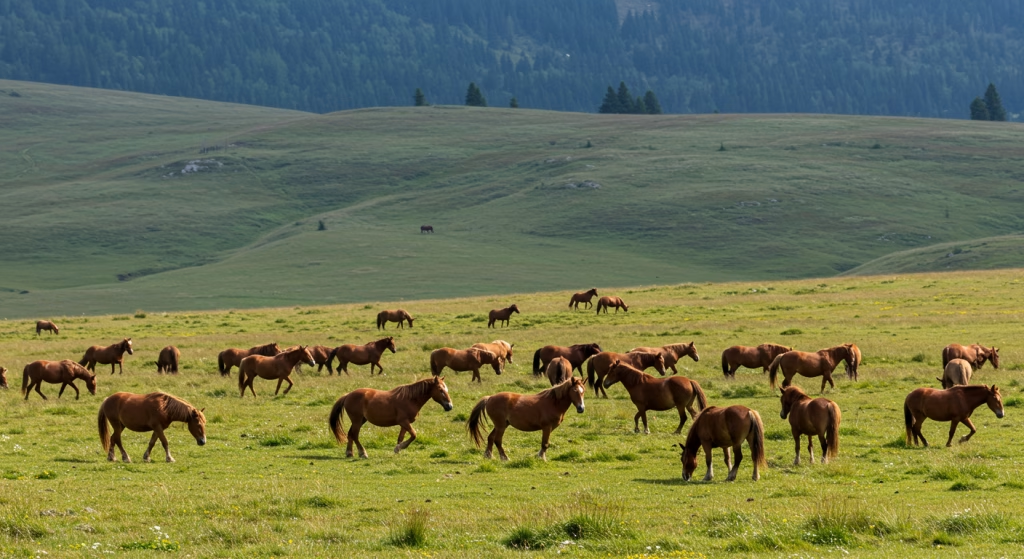
12. Fjord Horse: Norway’s Ancient Workhorse
Origin: Norway
Traits:
- Compact, muscular build
- Distinctive black dorsal stripe and trimmed mane
- Gentle and reliable
- Cold-tolerant and sure-footed
The Norwegian Fjord Horse is one of the world’s oldest and purest breeds, with evidence of its existence over 4,000 years ago. It was used by Vikings in war and agriculture and is known for its characteristic two-toned mane, usually cut to stand upright and highlight the black dorsal stripe.
Today, Fjords are used for driving, therapy, and family riding thanks to their calm nature and strength.
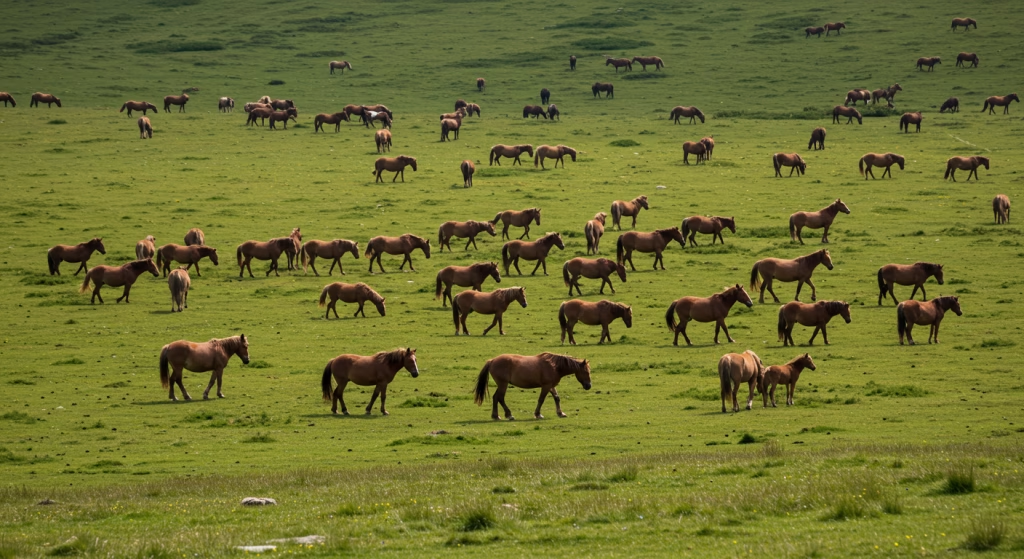
13. Percheron: The French Powerhouse
Origin: France (Perche region)
Traits:
- Muscular and elegant
- Often black or gray
- Smooth-moving for a draft breed
- Intelligent and adaptable
The Percheron began as a war horse and later became a favored draft animal in agriculture and industry. While powerful, the breed also has a surprising elegance, making it suitable for carriage driving and parades.
In the U.S., they were once the most common draft horse and are still appreciated for their work ethic and beauty.
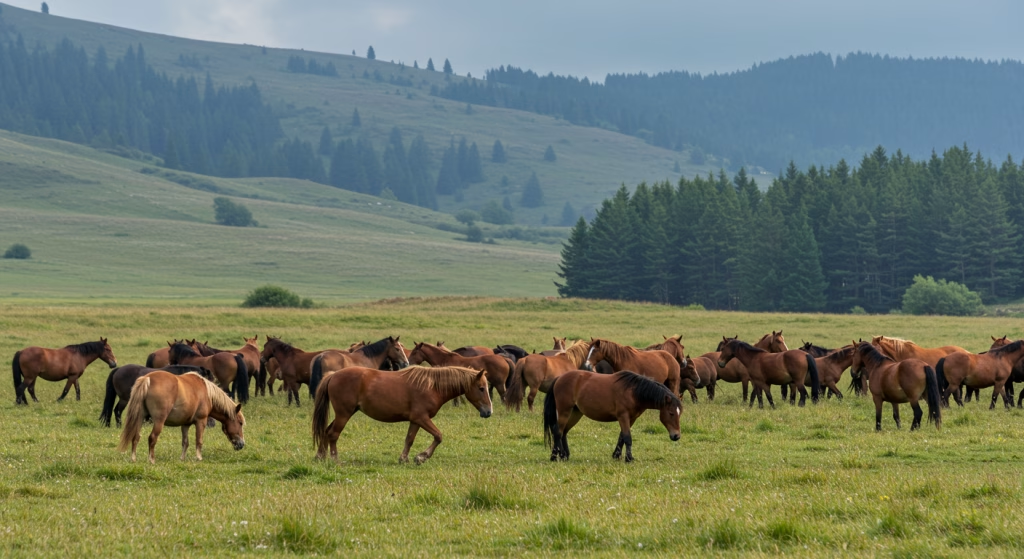
14. Gypsy Vanner: The Romani’s Treasure
Origin: United Kingdom (Ireland and Great Britain)
Traits:
- Feathered legs and long, flowing mane
- Compact and strong
- Friendly and calm
- Often piebald or skewbald (black/white or brown/white)
Developed by the Romani people to pull their colorful wagons (vardos), the Gypsy Vanner


